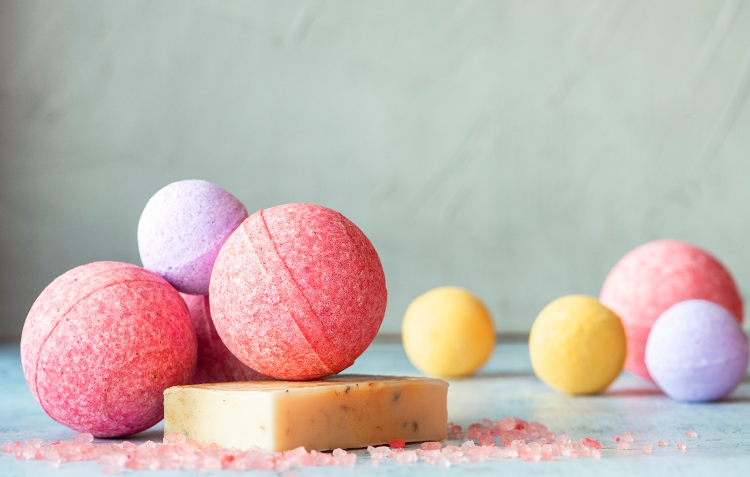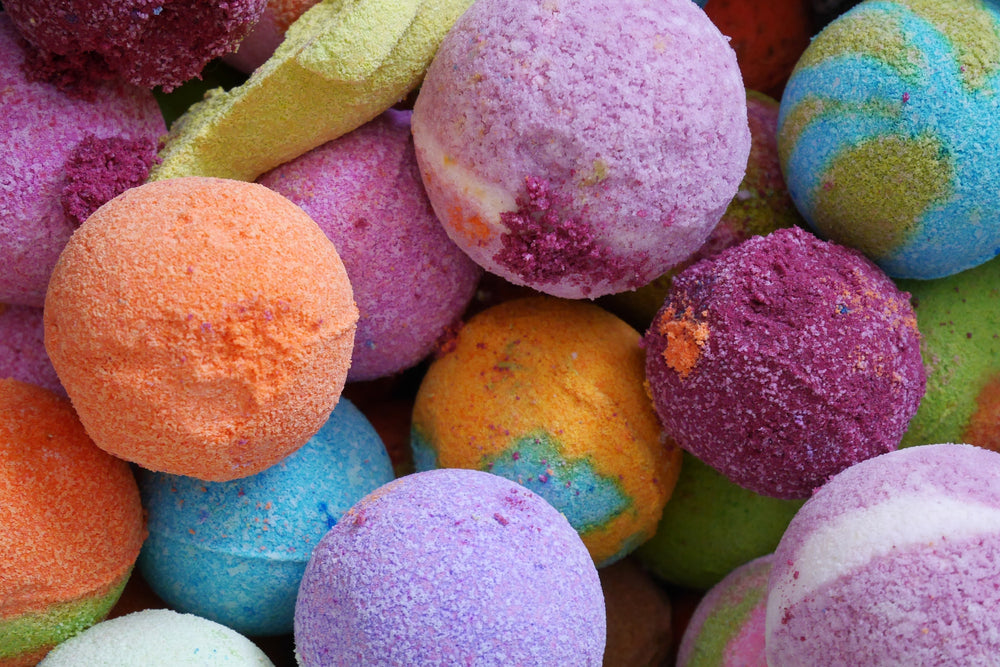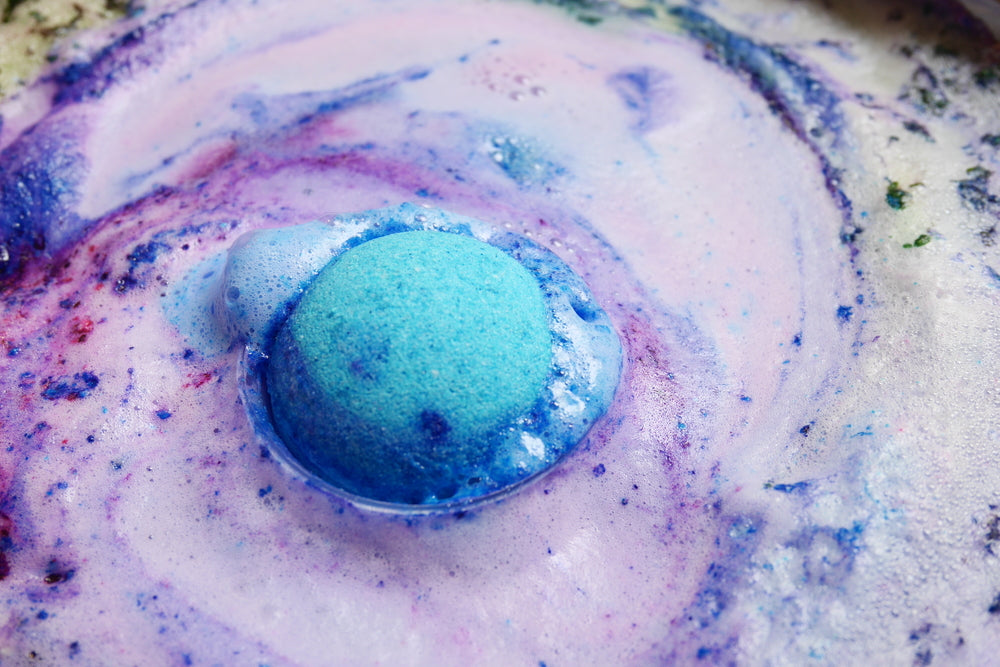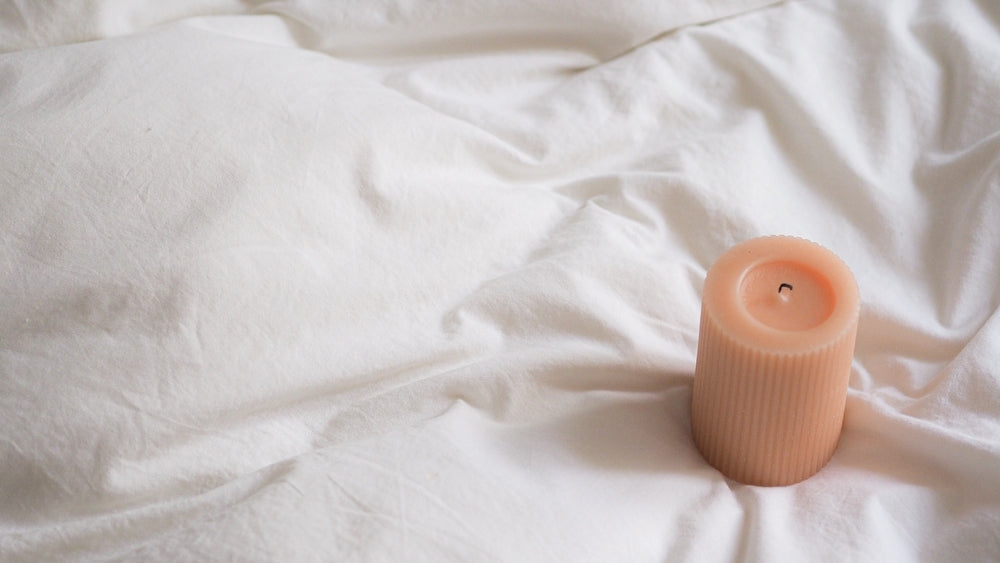Bath bombs have been used for an enjoyable bath time experience for all ages. It's a must-have, especially bath bomb packs if you want to make your bath exciting.
If you haven’t used a bath bomb before, you might be wondering what the hype is all about. Many people enjoy the variety of scents, while other types of bath bombs impart interesting blends of colours to the bath. Some even contain miniature aromatics or flowers as an extra perk. You might also find natural bath bombs Australia that makes the water bubbly but most offers a fizzing effect.
If you're wondering what takes place when a bath bomb comes in contact with water, here are some of the bath bomb facts and the science behind it, so you'll appreciate these miniature balls more.
What are bath bombs made of?
Today, every bath bomb shop and company boasts distinct recipes. Still, they typically include the same core ingredients, such as baking soda or sodium bicarbonate, citric acid, and cornstarch. The combination of these components is what causes a bath bomb to fizz in water.
Both baking soda and citric acid readily dissolve. Upon interaction with water, both produce carbon dioxide, which results in the fizzing bubbles you see after dropping a bath bomb into your bathtub. (1)
Cornstarch works as a dry filler. It's responsible for slowing down the reaction by binding to both citric acid and baking soda, allowing the fizzing reaction to last longer.
The chemical reaction in bath bombs
Bath bombs generally work via an acid-base reaction. Creating one involves mixing two reactive chemicals. (2)
As a weak base, sodium bicarbonate will not react with water, while citric acid is a weak acid that produces a fizzy reaction. Since there's a base and an acid, both neutralise each other.
If combined and come in contact with water, it results in new molecules, namely carbon dioxide and sodium citrate salt. The ensuing fizzing and bubbling are due to carbon dioxide as it escapes the water. As the gas breaks free from the bubbles, it helps spread the fragrances and colours. (3)
The reaction ends once all the chemicals are used, and the fizzing declines. Regardless of the bath bomb gift set you'll use, the bath water will have a different colour and a lovely aroma.
Are there additional ingredients?
Aside from the three main components, most bath bombs on the market contain more ingredients. Most bath bombs contain essential oils, fragrances, dyes, and other agents released when the bath bomb dissolves in water. These additives produce the aromas and colours people expect from bath bombs. You might even encounter a bath bomb gift set Australia that contains Epsom salts and a specific type of oil.
Isopropyl alcohol is also added to bath bombs to maintain their effectiveness. In humid areas, moisture in the air causes the baking soda and citric acid to react outside the bathtub. In such conditions, the presence of water molecules in the air is enough to produce carbon dioxide gases, rendering the effectiveness of the bath bomb. Isopropyl alcohol evaporates rapidly and ensures the dryness of the agents, even in humid conditions.
Potassium bitartrate or cream of tartar also works as a binding agent that ensures bath bombs stay dry and compact. It ensures the mixture holds together, keeping the ball solid until it's ready to be used.
How to create homemade bath bombs
If you're questioning how to make bath bombs Australia, you can do the process at home. When preparing a bath bomb at home, you need to prepare both the wet and dry mixtures.
The dry mixture includes citric acid, baking soda, and cornstarch. The wet mixture is usually a combination of vegetable oil, a teaspoon of water, and food colouring. You can also add a fragrance of your choice to the mixture.
Add a few drops of the wet mixture to the dry mixture with a clean dropper. The question that might come to mind is, do bath bombs go off? Expect fizzing in the mixture, but press down on the fizzing area using a spoon to stop the reaction since you don't want a reaction yet. Combine the moist area with the rest of the mixture. Continue to repeat the process by adding the wet mixture a few drops and thoroughly mixing everything.
If you're going to utilise a bath bomb mould or an ice cube mould, allow the bath bombs to dry overnight at room temperature. Once they're completely dry, remove them carefully and store for future use.
Depending on the recipe you'll be using, it's crucial to get the right amount of chemicals to ensure the citric acid and baking soda react completely with one another. Remember that you don't want to have a basic or an acid bath. One of the considerations is that baking soda isn’t as potent as citric acid. With this in mind, the amount of baking soda should be more than citric acid. (4)
Final thoughts
Bath bombs are a trend that'll surely stay now that many consider them a must-have for a relaxing, spa-like experience in the comforts of home. The bubbling and fizzing reaction once you drop a bath bomb in your bathtub can be a marvel to look at. Once the reaction stops, it gives you a delightful bath experience, allowing you to unwind.
Bath bombs will remain a trend as brands create an array of concoctions of aromas and colours. And now that you know the science behind bath bombs, you'll appreciate these miniature balls beyond their colourful appearance and fragrance.
References:
- "Reaction of citric acid with baking soda", Source: https://persianutab.com/reaction-of-citric-acid-with-baking-soda/?lang=en
- "Investigating Students’ Reasoning about Acid–Base Reactions", Source: https://pubs.acs.org/doi/10.1021/acs.jchemed.6b00417
- "Acid-Base Reactions with Carbon Dioxide", Source: https://pubs.acs.org/doi/abs/10.1021/ed079p1464a
- "Citric Acid", Source: https://www.sciencedirect.com/topics/agricultural-and-biological-sciences/citric-acid





Leave a comment (all fields required)